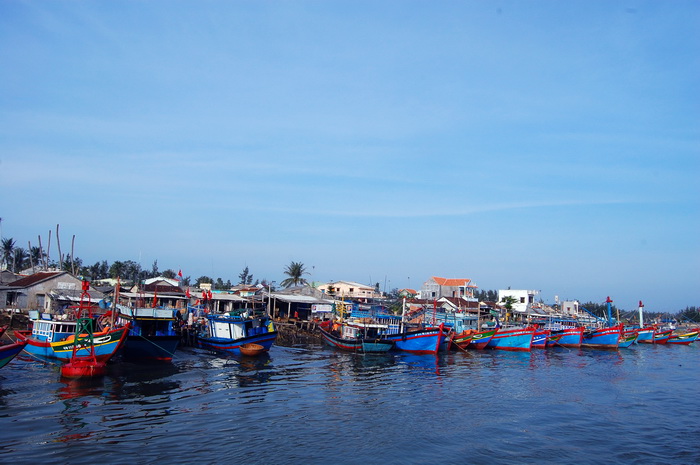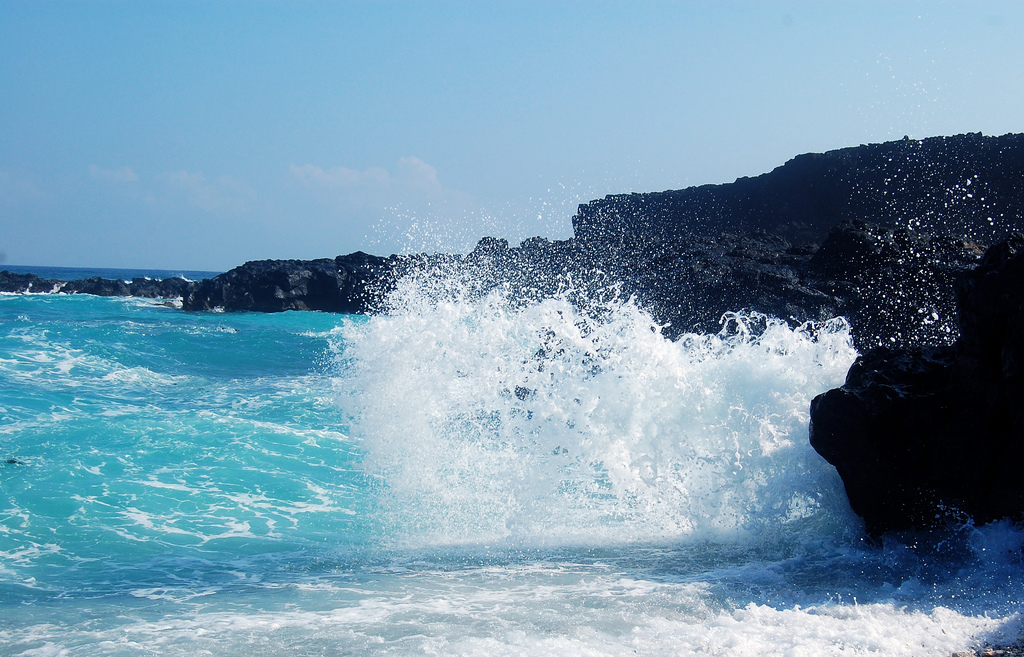Ly Son Island: Of History and Economy

Ly Son is known not only as a front-post island but perhaps most of all, as a homeland of the sailor-soldiers of the Hoang Sa Flotilla who went out to the East Sea to fight for the power of their country.
Ly Son is an island district of Quang Ngai Province. It has three islands: Lon Island (also called Re); Be (also called Bo Bai); and Mu Cu Island (located at the East of Lon Island). The district too has three communes namely An Vinh, An Dai (Lon Island); and An Binh (Be Island). Fishing and garlic growing are the two main livelihood of the local residents.
According to historical studies, in the early 17th century, 13 fishermen in mainland Sa Ky crossed the sea to Re Island (Ly Son Island's former name) to reclaim the land and settle there. The Hoang Sa Flotilla were assigned by the court the duty of measuring the sea routes, but most importantly to protect and establish the sovereignty of Vietnam over Hoang Sa (Paracel) and Truong Sa (Spratly) Archipelagoes in the East Sea.
The story of the Hoang Sa Flotilla is so famous that many historical books have been written about it. It also follows perhaps that many versions of the whole subject have been made up, especially one that suggests the reorganization of the Hoang Sa Flotilla itself to create two Flotillas, Hoang Sa and Que Huong, to include former and new members from other areas.
It is this heroism of the Hoang Sa Flotilla that made Ly Son a tourist attraction. The grave of Pham Huu Nhat, captain of the Hoang Sa Flotilla, is one of the most visited sites in the place. He led countless voyages under the order of the king to defend their nation. He died at sea in the line of duty along with many sailor-soldiers. In memory of the great captain, 70 fishermen went out to the sea themselves at the end of February of the lunar calendar and didn't return until August.
To this day, Ly Son residents celebrate the “Troop Banquet Ceremony of the Hoang Sa Flotilla” annually in honor of the brave captain and his men. This has become the largest celebration of the island to emphasize their gratitude for such heroism and nationalism. Couplets expressing such gratitude hang at the central chamber of the communal house in An Hai Village where the 13 sages of the island are worshipped.
But aside from such heroic history, Ly Son is also famous for other things. It has a lava rock strata, remains of a volcano that has been dormant for over 200 million years ago. It has numerous ancient relics related to the Hoang Sa Flotilla which tourists like to visit. It also has a popular beach named Ba Ri located in front of Duc Pagoda and has a 27-meter high statue of the Goddess of Mercy facing the East Sea. Perhaps the reason the beach is popular in the first place is that according to local legend, it is where the Hoang Sa Flotilla army were trained before they set out to perform the courageous duty of defending their country.
Ly Son's proximity to the waters along with its history tied to the sea is also a critical factor why residents have adapted and mastered watery skills such as fishing. The island has currently more than 2,500 fishermen and over 400 boats with a capacity for offshore fishing. And in respect to their history, Ly Son residents have made it a tradition to offer a ceremony to pray for and bless their fishermen before setting out to sea. Thus, fishing is not only an income-generating livelihood but perhaps more so, a continuation of their ancestors' mission to protecti the nation's sovereignty.
Aside from fishing, Ly Son is also known for garlic cultivation. It has set aside almost 300 hectares of its total land area to grow garlic and onions. About 90% of the population, including the fishermen, are involved in growing and selling garlic. In fact, Ly Son is known as the “Kingdom of Garlic” in Vietnam. In 2009, the Department of Intellectual Property under the Ministry of Science and Technology recognized the garlic brand of Ly Son as “favorable” not only for domestic but also for global production. It provides the market with an annual supply of about 2,000 tonnes of dried garlic and 3,500 tonnes of dried onions. In 2012, the garlic business brought Ly Son almost VND 160 billion.
Today, Ly Son is a picture of progress. The port is always filled with many ships coming out and going into the island. Green garlic fields abound. Tourism is growing so there are two high-speed passenger boats available everyday to accommodate the increasing number of visitors. Each trip takes about two hours. There is no doubt that the story of heroism of the Hoang Sa Flotilla has helped, if not established, tourism at Ly Son. This has brought both pride and determination in the residents to further develop their place economically and at the same time preserve their rich history and tradition.










